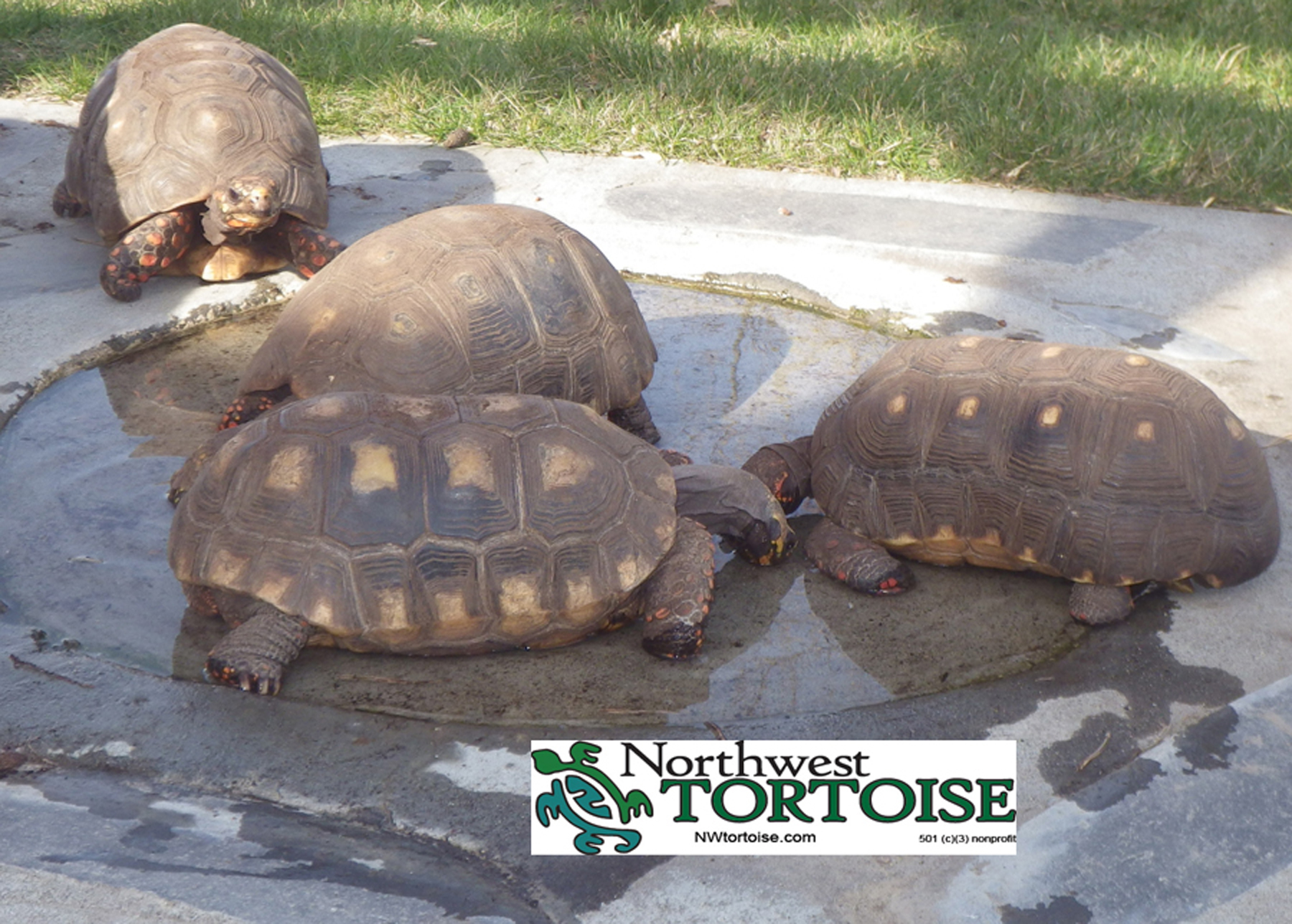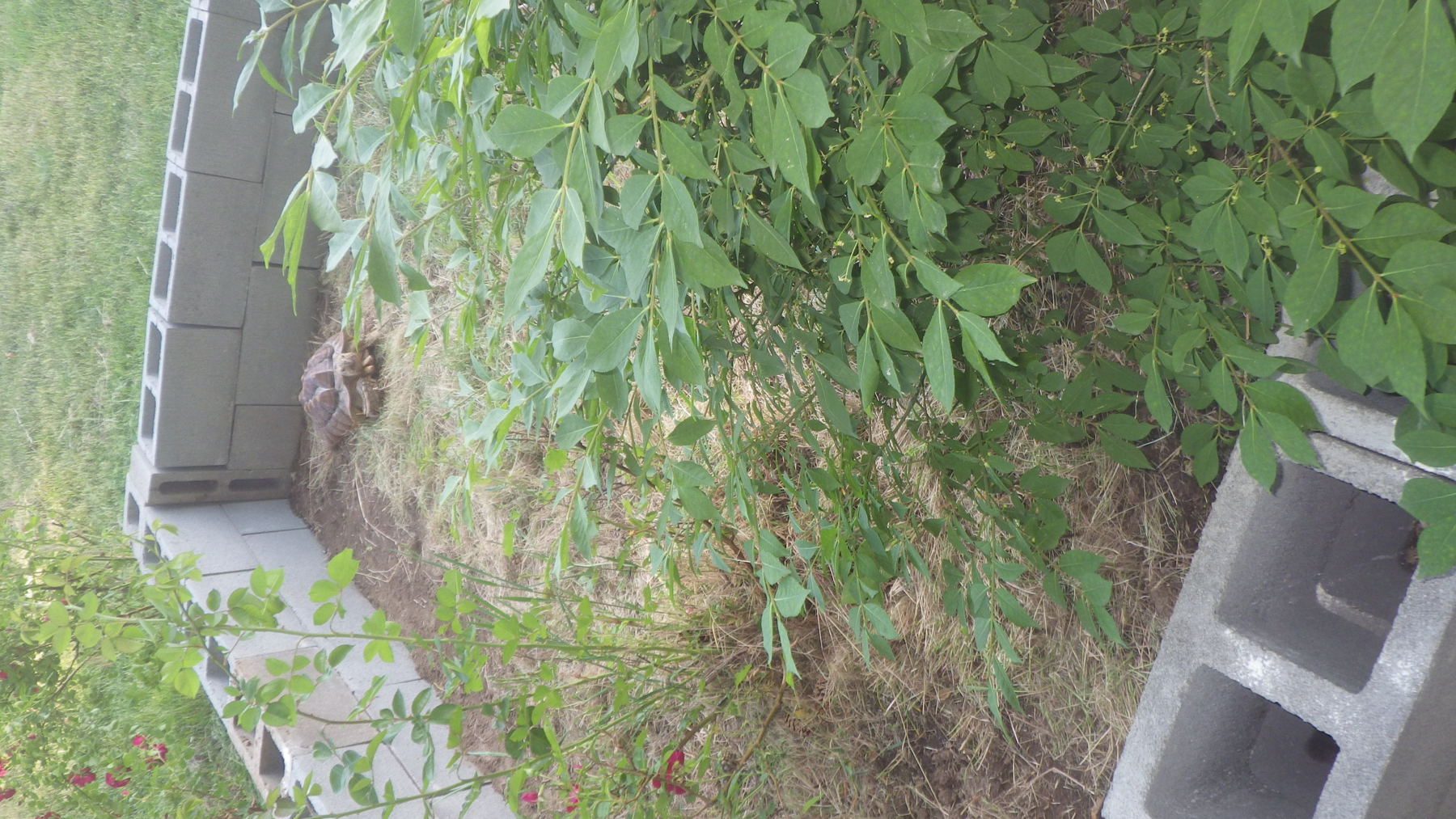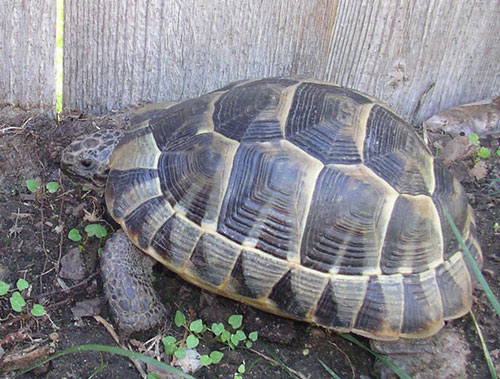Housing basics:
Proper Housing is crucial. Use open-topped tortoise table. Glass tanks of any size are NOT adequate to house turtles/tortoises.
The housing needs of turtle/tortoise species change as they age.
There are no hard-and-fast rules when it comes to creating indoor and outdoor tortoise enclosures. Tortoises have not been domesticated or studied adequately in captivity. We do not understand what they need, and cannot create a one-size fits all. It’s your responsibility as an owner to create the best possible enclosures.
This is a starting guide. The following information is based on experience and research and by no means represents finality on the subject. There are so many aspects to planning a tortoise enclosure that are not addressed on this page. Please conduct your own research about the enclosure that your tortoise requires.
3 basic considerations when planning indoor and outdoor enclosures:
- Where do they come from (geographically)? Can you mimic those conditions?
- Are they basking or non-basking?
- Do they burrow shallow or deep?
- Do you have enough space now and in the future to accommodate growth?
- Hatchlings and juveniles need specialized enclosures
- Adults are less specialized but still require a correct set-up for the species
- Hatchlings dehydrate very easily and need daily access to water
- Juveniles are not as sensitive as hatchlings but still need frequent access to water
- Adults can go longer periods without water, depending on species and health status, but still need access to water


3 basic considerations for outdoor enclosures:
- Squirrels are opportunistic and will go after a small tortoise
- Raccoons are very adept at making your tortoise its evening meal. Its paws are perfect for prying its way into almost anything. If you have raccoons, extra security must be provided
- Dogs and tortoises DO NOT MIX. Tortoises are just chew toys to dogs. Almost every dog chew injury that’s come through the rescue are from dogs that ‘have been around them for years and suddenly this happened.’
- Some bird species will feed on small tortoises. Do research accordingly about what bird species pose a risk in your location.
- If you house a tortoise with another animal, chances are it will eat its poop. It’s a natural behavior. However what is not natural, for example, is goat, chicken or pig poop in a tortoise diet. You never know what microscopic organisms a farm animal can pass to a tortoise through poop eating. This can cause serious harm to your tortoise. The tortoise is digesting something completely foreign to its digestive system. It will cause long-term internal problems and quite possibly early death.
- Cap corners – some species of tortoise are excellent climbers
- Don’t use uneven or textured bricks because tortoises can climb right up and over
- Prevent digging out – some species are excellent diggers and will burrow out of the pen
- Prevent predators from reaching the tortoise through the top of the enclosure
Enclosure guidelines by age:

GENERAL adult tortoise indoor housing considerations:
- Use a dish that allows the tortoise to get in and out easily
- Use a dish with enough space for the tortoise to get in completely
- If you don’t have a large enough dish use a soaking bin or sink
- Use a natural substance that will not harm your tortoise
- Natural substrate examples: Organic soil (NO PERLITE OR ADDITIVES), peat moss, coco coir, hardwood mulch, cypress mulch, sphagnum moss, etc.
- Unnatural/harmful substrate examples: Newspaper, paper pellets, sawdust, Astroturf or other ‘carpets,’ wood shavings, colored sand, litter, gravel, fish tank rocks, ground walnut shells, dried corn cobs, crushed coral, cedar, pine (avoid unnatural or man-made materials with added scents and/or treated with pesticides or herbicides), etc.
- AVOID choking hazards: Tortoises taste everything. Use something that will not impact their digestive systems if eaten
- Allow an area for the tortoise to burrow and/or hide
- Use a UVA/UVB bulb (a UVA bulb is NOT the same, it MUST have UVA and UVB)
- Use a proper dome with ceramic fixture, hanging arm and contact cage
- Do NOT use coiled bulbs – cause eye damage
- Know whether your tortoise is basking or non-basking and provide lights accordingly
- Use ceramic heat emitters with ceramic a fixture
- Heat bulbs (low wattage) can be used
- DO NOT use heat emitters that put out light
- DO NOT use brooder lamps or heat flood lights (too high wattage)
- USE a thermometer or hydrometer to determine correct temperature or humidity
- DO NOT rely on “I tested it a year ago”
- Check your temperatures REGULARLY and OFTEN
Five years to adult:
- Once a tortoise surpasses 5 years of development it can be treated more like an adult.
- Provide larger enclosures
- Provide deeper water facilities inside the enclosure
- Outdoor living may be full time (assuming all considerations have been taken)


1 to 5 years (any species):
- Contrary to existing literature young tortoises CANNOT be kept in conditions set-up for adults
- Moisture and humidity is VITAL to healthy full-body and shell development in ANY species
- Daily access to water is a must
- Young tortoises are very fragile – outside time should be provided and monitored closely
- A warm-moist area must be provided for the tortoise to bury itself (A hide-box functions well for this.) Burying allows the shell and skin to absorb much needed moisture for healthy development. Burying also mimics the natural environment of the nest (current research shows the tortoises stay in the nest after hatching for a period of time)
- Burying mimics the natural environment of the nest (current research shows the tortoises stay in the nest after hatching for a period of time)
- Nests are frequently dug at the base of root-balls of plants creating a naturally moist environment
Hatchling to yearling:
This time period is very difficult and is not recommended for the novice or inexperienced keeper. NWT will not sell or adopt any tortoise under the age of one year. Housing will not be discussed here. See the resources section to start your research.


